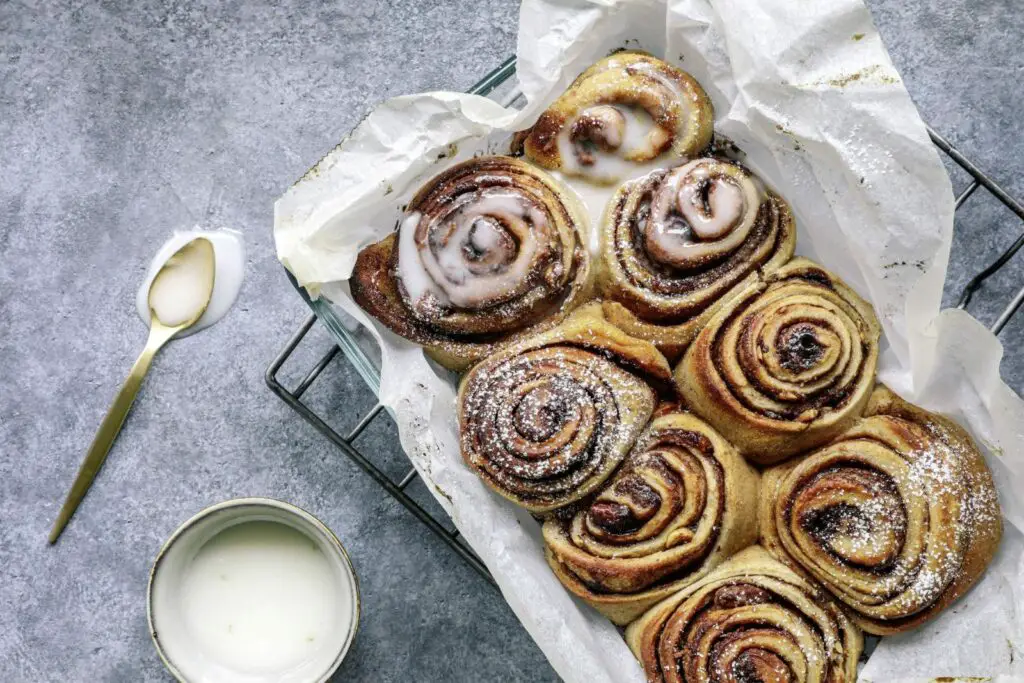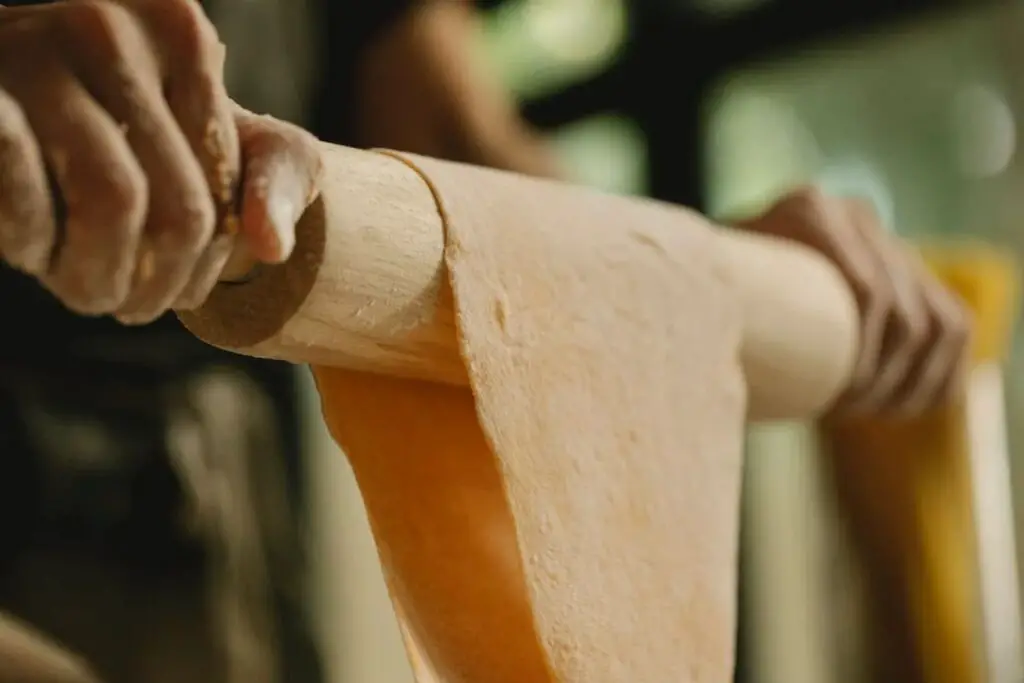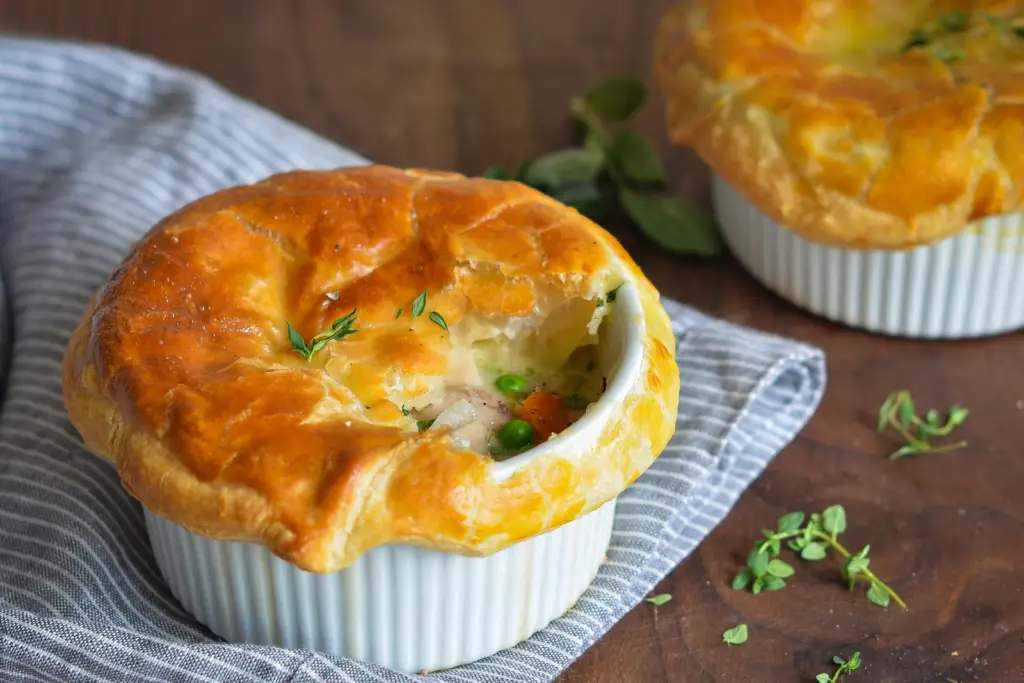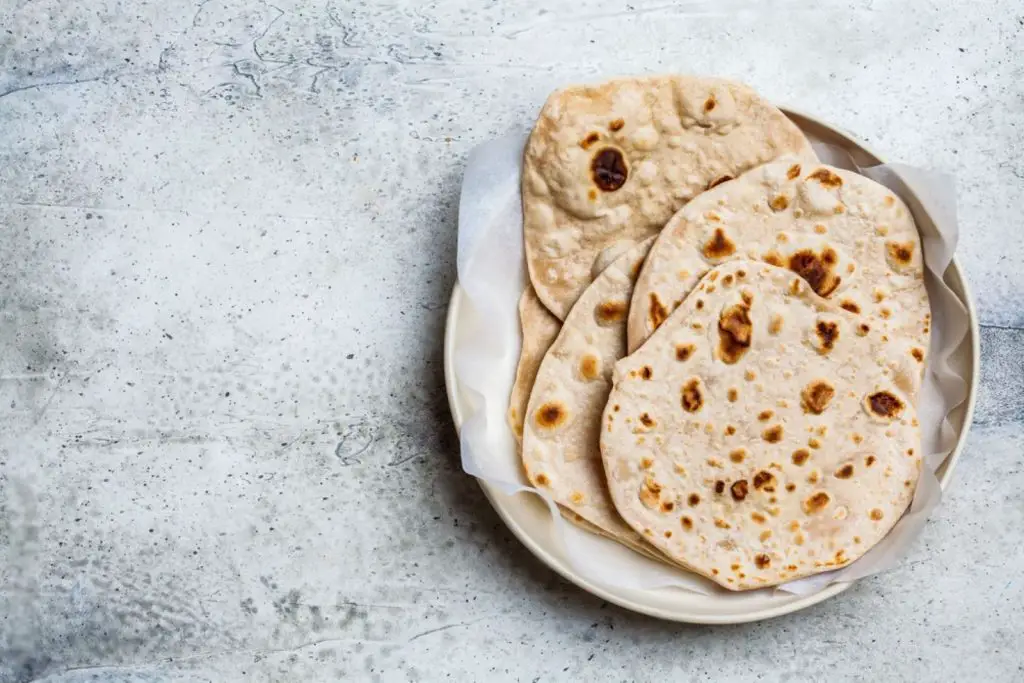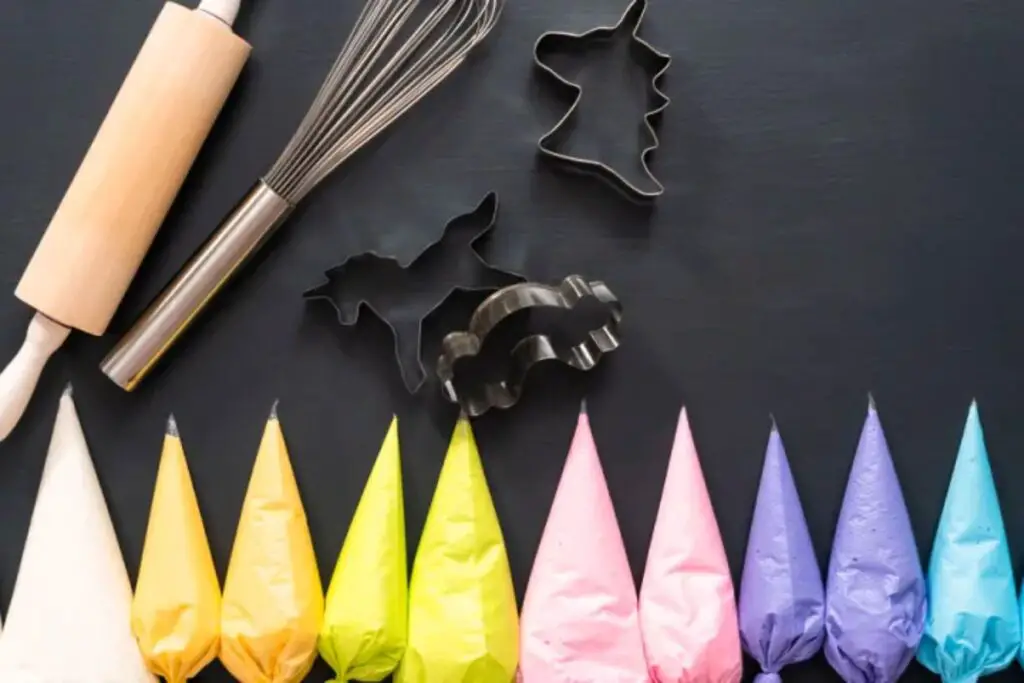
Potato pancakes, also known as latkes, are a cherished and flavorful dish that has been savored for generations in various cultures. Made from grated potatoes, onions, and a mixture of seasonings, these crispy delights offer a delightful combination of texture and taste. Whether served with a dollop of sour cream, applesauce, or as a savory accompaniment to meats and vegetables, potato pancakes are a comfort food that brings joy to many. However, preparing a large batch of latkes can sometimes lead to leftovers, prompting the question of how to best preserve their crispy goodness. Freezing potato pancakes emerges as a practical solution to extend their enjoyment, allowing you to savor the delectable flavor and crispiness of these beloved treats whenever you desire a taste of tradition, without the need for a fresh preparation. In this guide, we will explore the best practices for freezing potato pancakes, ensuring that their crispy exterior, tender center, and delightful taste remain lovingly preserved, ready to be enjoyed as a nostalgic treat or a satisfying side dish, even when you wish to indulge in some traditional comfort at a moment’s notice.
Here are the simple steps to freeze potato pancakes:
Step 1: Cook the Potato Pancakes
Preparing the potato pancakes before freezing them. Since freezing can alter the texture and flavor of foods, it’s crucial to start with properly cooked and cooled potato pancakes to maintain their taste and quality.
To begin, you’ll need to prepare the potato pancakes according to your preferred recipe. The main ingredients typically include grated potatoes, onions, eggs, flour, salt, and pepper. Some recipes may also include additional spices or herbs for extra flavor.
The process of making potato pancakes usually involves grating the potatoes and onions, mixing them with the other ingredients to form a batter or mixture, and then frying them until they turn golden-brown and crispy on the outside.
Once the potato pancakes are cooked to perfection, the next essential step is to allow them to cool down to room temperature. Cooling them is crucial because freezing hot or warm food can lead to the formation of ice crystals, which can negatively affect the texture and taste when they are later thawed and reheated. Allowing the pancakes to cool also prevents condensation from forming inside the packaging, which could cause sogginess or freezer burn during freezing.
After the pancakes have cooled down, you can proceed to the next steps of the freezing process. These steps include arranging the pancakes on a baking sheet, pre-freezing them to prevent sticking, individually wrapping or packaging them, and finally storing them in the freezer.
By cooking the potato pancakes first and then letting them cool before freezing, you ensure that they retain their delicious taste and crispy texture even after being frozen and reheated. So, take your time in this initial step, as it sets the foundation for enjoying mouthwatering potato pancakes at a later time with minimal loss of quality.
Step 2: Prepare a Baking Sheet
Preparing a baking sheet or large tray to facilitate the freezing process of the potato pancakes. This step is essential for preventing the pancakes from sticking to the surface and ensuring easy removal once they are frozen.
To prepare the baking sheet, you’ll need either a standard baking sheet or a large tray with a flat surface. It’s best to choose a size that comfortably fits in your freezer and accommodates the number of potato pancakes you want to freeze.
To line the baking sheet, simply cut a piece of parchment paper or wax paper that covers its surface entirely. Make sure to leave some excess paper hanging over the edges, as this will make it easier to lift the frozen pancakes later.
The lined baking sheet serves as a platform to arrange the cooled potato pancakes in a single layer. Placing them in a single layer is essential because it prevents the pancakes from sticking together during the freezing process. If the pancakes were to touch each other, they might freeze together, making it difficult to separate them without causing damage.
By using parchment paper or wax paper as a barrier between the pancakes and the baking sheet, you create a non-stick surface that ensures the pancakes can be easily lifted off once frozen. This also helps maintain the pancakes’ shape and appearance during freezing, so they remain visually appealing when you take them out for future use.
This step ensures that the freezing process is smooth and hassle-free, and it contributes to preserving the individual integrity of each potato pancake. With the baking sheet properly prepared, you can now move on to arranging the cooled pancakes on it before proceeding to the next steps in the freezing guide.
Step 3: Arrange the Potato Pancakes
Arranging the cooled potato pancakes on the prepared baking sheet or tray. The purpose of this step is to ensure that the pancakes freeze individually and do not stick together during the freezing process.
After the potato pancakes have been cooked and allowed to cool to room temperature, you’ll now take them and place them on the baking sheet. It’s crucial to arrange the pancakes in a single layer, meaning that they should not overlap or touch each other.
By placing the pancakes in a single layer, you create enough space between them, which prevents them from sticking together as they freeze. If the pancakes were to touch or overlap, they could freeze into a solid mass, making it difficult to separate them when you want to use only a portion of the batch.
Each potato pancake should have enough room around it on the baking sheet. This space allows the cold air in the freezer to circulate freely around each pancake, ensuring they freeze evenly and efficiently. It also helps maintain their individual shapes and prevent any unwanted merging of the pancakes.
If you have a large number of potato pancakes to freeze, you may need to use multiple baking sheets or trays to accommodate them all in a single layer. If that’s the case, you can stack the baking sheets or trays in the freezer, making sure there is enough space between them to allow for proper air circulation.
Once the potato pancakes are neatly arranged on the baking sheet, you are now ready for the next step, which involves pre-freezing or flash-freezing them. Pre-freezing helps set the pancakes in their individual form and further prevents sticking. Following this step-by-step process ensures that you’ll have perfectly frozen potato pancakes that are easy to handle and use whenever you want a tasty treat.
Step 4: Pre-Freeze the Pancakes
Pre-freezing or flash-freezing the arranged potato pancakes on the baking sheet. This step is crucial for ensuring that the pancakes maintain their individual shapes and prevent them from clumping together during extended storage in the freezer.
After you have carefully arranged the cooled potato pancakes in a single layer on the prepared baking sheet, the next step is to put the baking sheet into the freezer. It’s essential to place the baking sheet on a flat surface in the freezer to avoid tilting or shifting, which could cause the pancakes to stick together.
The pre-freezing process typically takes a few hours, during which the potato pancakes will be partially frozen. This is different from the final freezing stage, where the pancakes will be fully frozen for long-term storage.
Pre-freezing or flash-freezing serves several purposes:
- Individual freezing: By pre-freezing the pancakes, each one gets the opportunity to freeze independently before they come into contact with one another. This prevents them from sticking together during the final freezing stage.
- Maintaining shape and texture: Pre-freezing sets the outer layer of the pancakes, helping them retain their shape and texture. This is especially important for delicate or soft pancakes that could lose their structure if immediately placed in close proximity with other pancakes during the initial freezing.
- Preventing clumping: When the pancakes are partially frozen in a single layer, they won’t adhere to each other. This prevents the formation of a solid mass, making it much easier to remove individual pancakes from the baking sheet later.
- Faster freezing process: Pre-freezing in a single layer allows the pancakes to freeze more quickly and efficiently, which further contributes to preserving their quality and taste.
Once the potato pancakes are partially frozen, you can proceed to the next step, which involves individually wrapping or packaging them. By following the pre-freezing step, you ensure that your frozen potato pancakes will be easy to handle and maintain their individual integrity, making them a delight to enjoy whenever you decide to take them out of the freezer.
Step 5: Package the Potato Pancakes
Packaging the partially frozen potato pancakes to ensure they are well-protected and maintain their quality during long-term storage in the freezer. Proper packaging is essential to prevent freezer burn, preserve the taste and texture, and keep the pancakes separate from one another.
After the potato pancakes have been pre-frozen in a single layer on the baking sheet, it’s time to take them out of the freezer. Since they are partially frozen at this stage, they will hold their shape and won’t stick together.
There are two common methods for packaging the potato pancakes:
- Individually wrapping with plastic wrap: One option is to wrap each partially frozen pancake individually with plastic wrap. Place a piece of plastic wrap over a single pancake, ensuring it covers the entire surface. Then, gently press the plastic wrap around the pancake to remove any air pockets. This airtight wrapping helps prevent freezer burn and keeps the pancake fresh and flavorful.
- Using freezer-safe resealable plastic bags: Another method is to use freezer-safe resealable plastic bags. This method is convenient if you plan to freeze multiple pancakes at once. Place the partially frozen pancakes in the bag, making sure to leave some space between each pancake. Next, carefully remove as much air as possible from the bag before sealing it shut. The removal of excess air reduces the risk of freezer burn and maintains the quality of the pancakes.
By properly packaging the partially frozen potato pancakes, you create a protective barrier that helps maintain their taste, texture, and overall quality during the freezing period. When you’re ready to enjoy the frozen pancakes, you can take out as many as you need without having to defrost the entire batch, making it a convenient way to savor this delightful dish whenever you desire.
Step 6: Label and Date the Packages
Emphasizes the importance of labeling and dating each package of frozen potato pancakes. This simple but essential step ensures that you can easily identify the contents and keep track of their freezing time, allowing you to prioritize the use of the oldest batches first.
When you have multiple packages of frozen food in the freezer, it can be challenging to distinguish them without proper labeling. By clearly labeling each package with the contents, in this case, “Potato Pancakes,” you avoid confusion and make it easy to find what you’re looking for when you’re ready to use them.
Additionally, including the freezing date on each package is crucial for keeping track of how long the potato pancakes have been in the freezer. Frozen foods have a limited shelf life, and their quality can deteriorate over time. By dating the packages, you can ensure that you use the oldest batches first, reducing the risk of food waste and ensuring that you enjoy the pancakes at their best quality.
Labeling and dating the packages also help with meal planning and organization. If you have multiple frozen foods, knowing when they were frozen can help you plan meals and use them before their quality starts to decline.
A useful tip is to use adhesive labels or stickers specifically designed for freezer use. These labels are resistant to low temperatures and won’t fall off or smudge. Alternatively, you can use a permanent marker to write directly on the packaging, ensuring that the label remains visible even in the freezer’s cold environment.
By taking a moment to label and date the packages of frozen potato pancakes, you’ll be rewarded with a well-organized freezer and the ability to enjoy your delicious homemade pancakes at their peak quality whenever you decide to take them out for a delightful meal or snack.
Step 7: Store in the Freezer
Focuses on the final step of the freezing process – storing the wrapped and labeled potato pancake packages in the freezer for long-term preservation.
After you have taken the time to package the partially frozen potato pancakes with plastic wrap or freezer-safe resealable bags, ensuring they are well-protected and labeled with their contents and freezing date, it’s now time to put them in the freezer.
When storing the potato pancake packages in the freezer, there are a few key points to consider:
- Flat position: Place the packages in the freezer in a flat position. Laying them flat helps prevent any breakage or damage to the pancakes during freezing. Avoid stacking them on top of each other, especially if the pancakes are still partially frozen, as this could lead to deformation or sticking together.
- Proper storage: Store the wrapped packages in an area of the freezer where the temperature is consistent and stays at or below 0°F (-18°C). The freezing process preserves the quality of the pancakes, and maintaining a consistently low temperature ensures that they stay fresh and safe to eat.
- Storage duration: Potato pancakes can be stored in the freezer for up to 3 months. While they will likely remain safe to eat beyond this timeframe, their quality may start to deteriorate after 3 months. To enjoy the best taste and texture, try to use the frozen pancakes within this recommended period.
Remember to keep an organized freezer, making use of the labeling and dating from Step 6 to keep track of the freezing time and prioritize the use of the oldest batches first. By adhering to all the steps in the freezing guide, you can ensure that your frozen potato pancakes maintain their flavor and texture, providing a delightful treat whenever you’re in the mood for this scrumptious dish.
Other related questions
How do you defrost potato pancakes?
To defrost potato pancakes, remove the desired number of frozen pancakes from the freezer and place them in the refrigerator overnight. Alternatively, you can defrost them more quickly by placing them in a single layer on a microwave-safe plate and using the defrost setting on the microwave. Avoid defrosting at room temperature to prevent bacterial growth and maintain the pancakes’ texture and taste.
Can you refreeze potato pancakes?
It is generally not recommended to refreeze potato pancakes once they have been thawed. When food is thawed, bacteria can multiply rapidly, and refreezing can lead to food safety issues and degradation in quality. To preserve the safety and taste of potato pancakes, it is best to only thaw the amount you intend to consume and avoid refreezing any leftovers.
How do I know if the potato pancakes have gone bad after being frozen?
To determine if frozen potato pancakes have gone bad, look for signs of freezer burn, off odors, or changes in texture. Freezer burn appears as whitish, dry spots on the pancakes, indicating dehydration and potential loss of flavor. If the pancakes emit an unpleasant or rancid smell, it’s a sign of spoilage. Additionally, if the texture appears excessively mushy, slimy, or discolored, the pancakes may have degraded and should be discarded to ensure food safety. Always trust your senses and err on the side of caution when in doubt.
Should you add any preservatives before freezing potato pancakes?
No, it is not necessary to add any preservatives before freezing potato pancakes. Preservatives are not recommended for freezing homemade food items like potato pancakes. Properly cooked and cooled potato pancakes can be frozen without preservatives, and when stored in airtight containers or freezer bags, they can maintain their quality and taste for several months.
Can you freeze potato pancakes with added vegetables or cheese?
Yes, you can freeze potato pancakes with added vegetables or cheese. However, it’s important to note that the texture and taste of the vegetables and cheese may change slightly after freezing and thawing. To freeze, cool the pancakes completely, then layer them between sheets of parchment paper in an airtight container or freezer bag to prevent sticking. Properly stored, frozen potato pancakes with added vegetables or cheese can be reheated in the oven or toaster oven for a delicious and convenient meal.
What are the potential texture and flavor changes in potato pancakes after freezing?
After freezing, potato pancakes may undergo some texture and flavor changes. They may lose some crispiness due to the moisture released during freezing and thawing. However, reheating them in the oven or toaster oven can help restore some of their crispiness. The flavor of the potato pancakes is generally well-preserved, but some subtle changes may occur, especially if they contain added vegetables or cheese. To maintain the best texture and taste, it’s recommended to freeze and reheat them properly.

